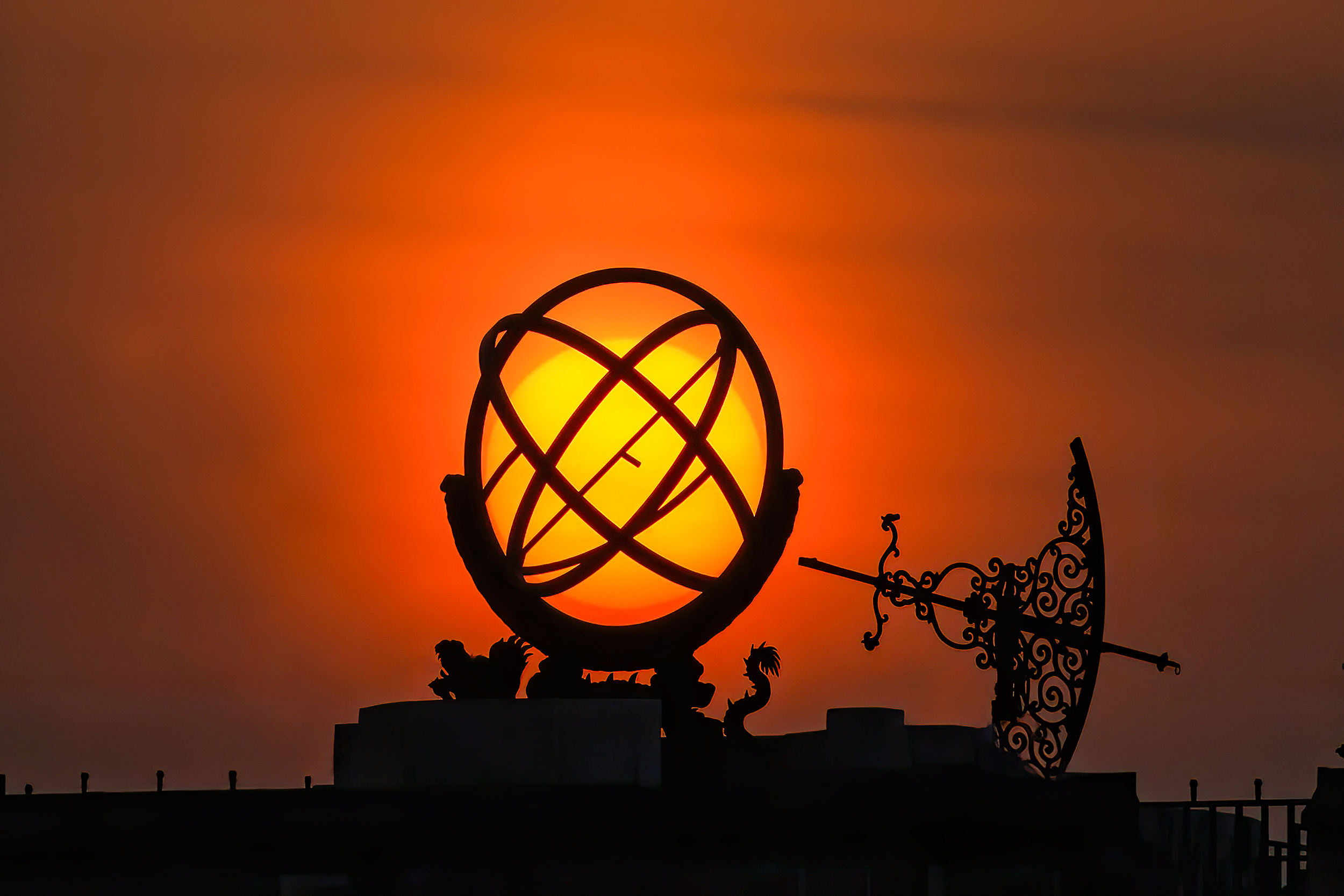Shoushi Calendar:A Masterpiece of Ancient Calendars
By ZONG Shihan

The sunset coincides with the Beijing Ancient Observatory. (PHOTO: VCG)
A calendar serves as a means of measuring time based on astronomical phenomena. The lunar calendar follows the moon's orbit around the earth, while the solar calendar aligns with the sun's seasonal positions. The traditional Chinese calendar belongs to the lunisolar calendar, harmonizing the relationships between the sun, the moon, and the earth, while the globally recognized Gregorian calendar is a solar calendar.
The Xia calendar is the earliest known calendar in China. In the Northern Song Dynasty (960-1127), Shen Kuo proposed a groundbreaking change in calendar usage with the introduction of the Twelve Qi Calendar, which shares similarities with the current Gregorian calendar.
The Shoushi Calendar, compiled by renowned scientists Guo Shoujing, Wang Xun and others from 1276 to 1281, is a comprehensive collection of the traditional Chinese calendar and holds the distinction of being the longest-lasting calendar in ancient China.
This Calendar's value can be attributed to its remarkable accuracy. Firstly, it defines a tropical year as 365.2425 days, differing by only 25.92 seconds from the Gregorian calendar and predating it by over three centuries. Secondly, advancements include a decreasing length of the tropical year over a century, as discovered by earlier scholars, with a reduction of 0.0001 days. Additionally, the Shoushi Calendar employs innovative calculations, utilizing formulas by Shen Kuo for converting ecliptic longitude, right ascension, declination, and employing cubic interpolation to calculate celestial degrees. This precise calendar fostered productivity and improved living standards during its time.
The influence of the Shoushi Calendar extended beyond China and received recognition by Japan, Korea, and among astronomers worldwide, who conducted extensive research on its principles. While the Gregorian calendar is prevalent in modern society, the Shoushi Calendar continues to impact traditional festivals and agricultural production, leaving a lasting legacy.






